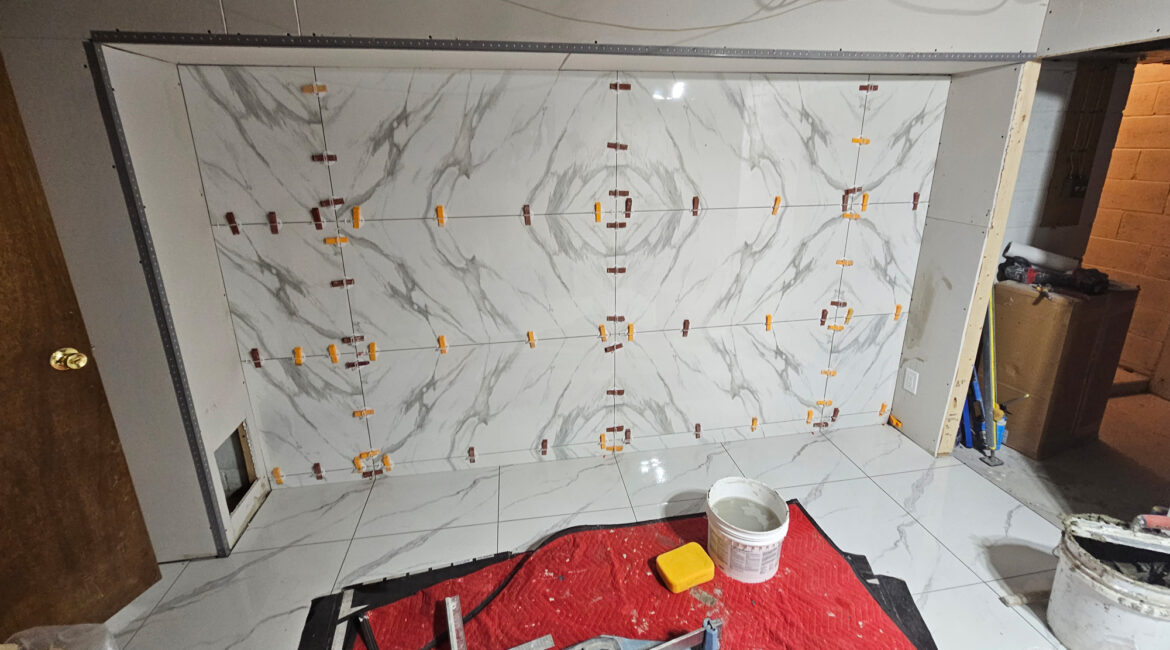When you step into a beautifully tiled bathroom or kitchen, it’s easy to admire the sleek surfaces, intricate patterns, and flawless finishes. But behind every tile masterpiece lies the skillful work of a tile setter, a craftsperson whose expertise transforms raw materials into stunning, durable designs. Let’s take a behind-the-scenes look at the world of tile setting, exploring the meticulous process, the challenges faced, and the artistry that goes into every tile installation.
1. Planning and Preparation: The Foundation of Success
Before a single tile is laid, a tile setter’s work begins with careful planning and preparation. This stage is crucial, as it sets the foundation for a successful installation. The tile setter assesses the area, takes precise measurements, and discusses design preferences with the client. Whether it’s a complex mosaic or a simple subway tile layout, understanding the client’s vision is essential to delivering a result that meets their expectations.
Once the design is finalized, the tile setter prepares the surface. This involves ensuring that the substrate (the surface onto which the tiles will be installed) is clean, level, and stable. Any imperfections, such as cracks or unevenness, are addressed to prevent future issues. This step might also include waterproofing, especially in bathrooms and kitchens, to protect against moisture damage.
2. Cutting and Laying Tiles: Precision and Patience
With the preparation complete, the tile setter moves on to the actual installation. This stage requires a combination of precision, patience, and creativity. Depending on the complexity of the design, the tile setter may need to cut tiles to fit around obstacles like pipes, corners, and outlets. Using specialized tools such as tile saws, nippers, and scoring tools, they carefully shape each tile to fit perfectly within the design layout.
The laying process begins with applying a thin layer of adhesive, known as thin-set mortar, onto the substrate. The tile setter then carefully places each tile according to the predetermined layout, ensuring even spacing and alignment. For larger projects or intricate patterns, this step can be time-consuming and requires a steady hand to maintain consistency.
3. Dealing with Challenges: Problem-Solving on the Fly
No tile installation is without its challenges, and this is where a tile setter’s problem-solving skills come into play. Uneven surfaces, unexpected obstacles, or slight variations in tile size can all pose difficulties. However, an experienced tile setter knows how to adapt to these challenges, making adjustments on the fly to ensure a flawless finish.
For example, if a floor is slightly uneven, the tile setter might use a leveling system to create a flat surface for the tiles. If tiles are not perfectly uniform in size or shape, they may need to make minor adjustments to the layout or grout lines to achieve a consistent appearance. These on-the-spot decisions require not only technical knowledge but also an eye for detail and aesthetics.
4. Grouting: The Finishing Touch
Once the tiles are securely in place, the next step is grouting. Grout is a crucial element that fills the spaces between tiles, providing stability and a polished look. The tile setter applies grout using a rubber float, ensuring it fills every gap evenly. After the grout is applied, the excess is carefully wiped away with a damp sponge, leaving the joints smooth and clean.
Grouting may seem straightforward, but it requires careful attention to detail. The color of the grout can significantly impact the final appearance, either blending in with the tiles for a seamless look or contrasting to highlight the pattern. The tile setter must also ensure that the grout cures properly, avoiding common issues like cracking or discoloration.
5. Cleaning and Sealing: Ensuring Durability
After the grout has dried, the tile setter cleans the tiles to remove any residue or haze. This final cleaning step reveals the true beauty of the tiles, showcasing their color and texture. In some cases, the tile setter may also apply a sealant to protect the tiles and grout from stains and moisture, especially in high-traffic areas like bathrooms and kitchens.
Sealing not only enhances the durability of the installation but also makes it easier to maintain, ensuring that the tiles will look as good as new for years to come.
6. The Satisfaction of a Job Well Done
For a tile setter, there’s nothing quite like stepping back and admiring the finished product. The satisfaction comes not only from seeing a beautiful space but also from knowing that their craftsmanship will be enjoyed and appreciated for years. Each tile installation is a testament to their skill, attention to detail, and dedication to their craft.
Whether it’s a small backsplash or an entire bathroom renovation, tile setting is a blend of art and science. It requires a deep understanding of materials, tools, and techniques, as well as a creative vision to bring a design to life. The next time you admire a beautifully tiled surface, remember the tile setter behind it—whose hard work and expertise have made it possible.


